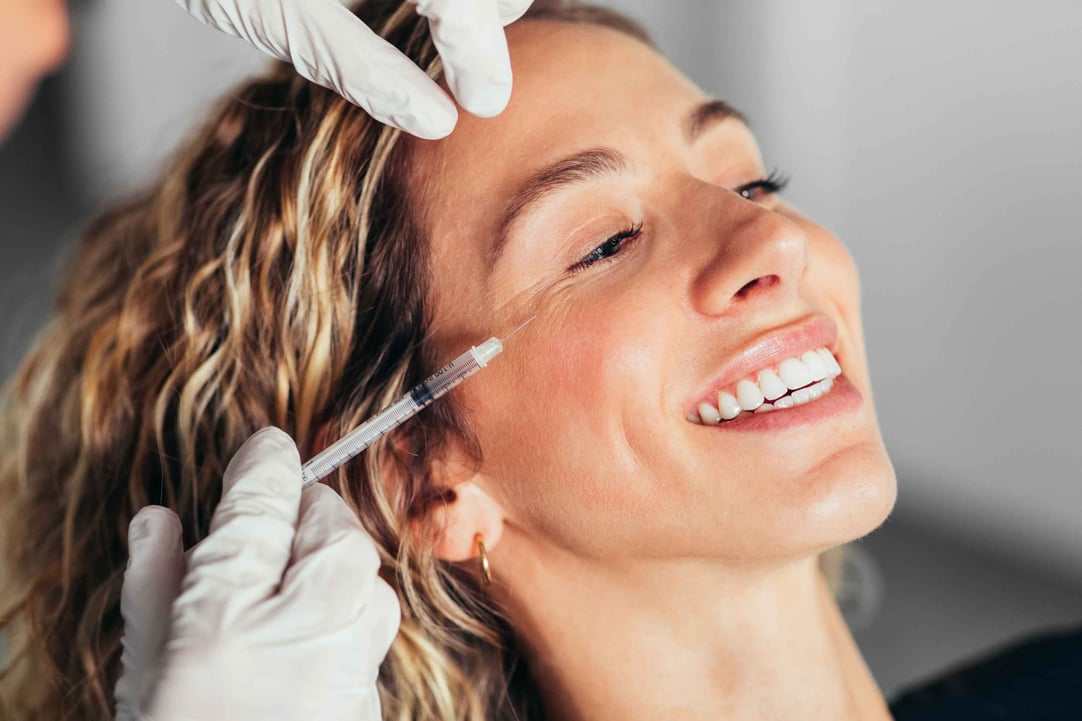Botox, also known as Dysport, Xeomin, and Jeuveau, is the brand name of a cosmetic procedure during which botulinum neurotoxin or botulinum toxin are injected into specific areas of the body. These toxins simulate flaccid paralysis by inhibiting the release of the neurotransmitter acetylcholine from the axon endings at the neuromuscular junction. This keeps the muscle from contracting. Botox can temporarily smooth out fine lines, and create a lifting effect. The procedure is particularly effective in areas of the face, where it can erase crow's feet and lines around the eyes, lift the corners of the mouth, round out a square jaw line, smooth lines on the forehead, erase the vertical lines between the brows, reduce frown lines, and generally target any area where wrinkles appear. It can also be used to diminish neck bands and improve skin dimpling in the chin. It's important to note that while Botox is generally used as a basic wrinkle treatment, it has many off-label medical applications. It can also treat more serious cosmetic issues, such as gummy smiles and excessive sweating in various areas of the body. It's prescribed for lazy eyes, crossed eyes, uncontrolled blinking, narrowed eyes, and overactive bladders. It is known for its ability to relieve muscle contractions and spasms, and it can be used for certain types of pain.
In 2022, more than 7.4 million patients received Botox treatments in the US, making it by far the most popular non-invasive medical procedure on the market. There's a reason the injections are so common. The effects may be temporary, but they are long-lasting, roughly 3-6 months depending upon the type of treatment. They're also quite effective. When used properly, Botox does give patients the wrinkle-free, youthful appearance they crave. But there is a lot of prejudice surrounding the procedure. Botulinum toxin, the active ingredient in Botox, is created with the bacterium C. botulinum. Some members of the public have voiced concerns because C. botulinum is the source of botulism, a potent, life-threatening disease. These concerns are unfounded. It is true that Botox is made from the same ingredients that cause botulism, and like any procedure, it does have its potential risks and side effects. But botulism is not one of them, and it would be impossible to discount the many medical benefits of Botox injections. In fact, scientists are still studying Botox and discovering new ways to treat their patients with it. The injections have also been prescribed for disorders that are resistant to other treatment methods, such as migraines and foot pain.






